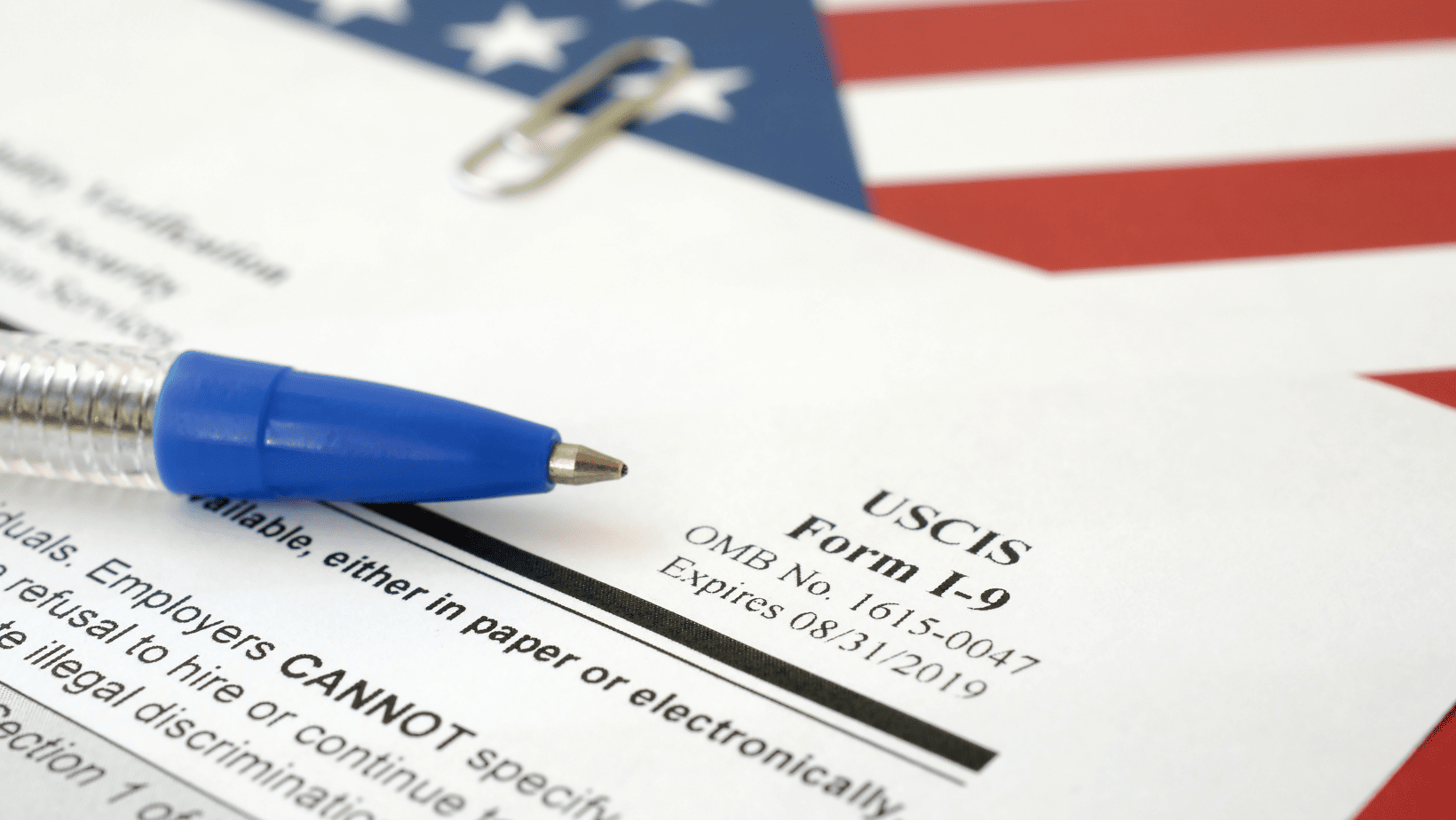Form I-9, the Employment Eligibility Verification, is a United States Citizenship and Immigration Services form. Mandated by the Immigration Reform and Control Act of 1986, it is used to verify the identity and legal authorization to work of all paid employees in the United States. All U.S. employers must ensure proper completion of Form I-9 for each individual they hire for employment in the United States. Fines for I-9 violations range from $110 to $1,100 for one single, minor, or technical violation. Incorrect I-9 forms can be used as evidence of knowingly hiring an illegal alien that can result in a fine of up to $3,200 per violation. Penalties for knowingly hiring and continuing to employ violations range from $375 to $16,000 per violation.
Once an offer of employment is accepted the employee must complete Section 1 of the form no later than the first day of work for pay, or before the first day of work, if the employer has offered the individual a job and if the prospective employee has accepted it.
Section 1 – Employee Information and Attestation
Section 1 is filled by the employee. Employees must list their full legal name, middle initial and maiden name, if applicable. They must provide their existing address and date of birth. The employee does not have to give his/her social security number unless the employer uses E-Verify. The employee must attest under the penalty of perjury his/her citizenship or employment-authorized immigration status, and (if applicable) the Alien or Admission Number, and the date employment authorization expires. The employee must next sign and date Section 1 certifying the information as true. The employee must sign the form even if a translator assists in the preparation of Section 1. The translator must also provide his or her name, address and signature and date the form. Employers must review the information that the employee has provided in Section 1 and ensure that the employee provided information in all required fields.
Section 2 – The Employer Review and Verification
Section 2 must be filled by the employer no later than three business days of the employee’s first day of work for pay. The employee must present the employer with unexpired original documentation that shows identity and employment authorization. Importantly, the employee chooses which documentation to present. An employer cannot specify which documentation the employee uses and doing so would subject the employer to a claim of unlawful discrimination. The documents on List A show both identity and employment authorization. Some List A documents are in fact a combination of 2 or more documents. In these cases, the documents presented together count as one List A document. Employees presenting an acceptable List A document should not be asked to present any other document. The employee must make one selection from List A , or one selection from List B in combination with one selection from List C. List B documents show identity only, and List C documents show employment authorization only.
Following steps can be taken in order to take your organization one more step toward being a complaint organization and ready for an ICE audit at any point of time.
- Correct & complete Form I-9: Make sure I-9 forms are completed correctly and accurately for all new hires. Ensure the employee completes section one of the I-9 on the first day of employment and section 2 of I-9 is completed within 3 business days from the date of hire. Accept only original documents, not photocopies, and don’t require additional documents from foreign employees. Make sure all I-9 documents are verified in person to ensure that documents are legitimate. Do not accept tampered, photocopied, faxed or scanned documents for I-9 purposes. Employers should allow the employee to choose from the list of acceptable documents.
- Set out I-9 compliance policy: Establish an I-9 compliance policy in the company and make sure that the policy is followed uniformly across locations irrespective of race or gender. This will safeguard you from discrimination lawsuits, establish good faith efforts and mitigate potential penalties.
- Regular I-9 audits: Conduct an in-house audit of I-9 forms and correct mistakes. Cross out incorrect information, add correct information, initial and insert current date if you’re using paper I-9. Also put up processes and procedure to regularly conduct I-9 audits and check whether there are any discrepancies.
- Monitor & re-verify: Ensure that you re-verify expiring work authorization documents before they expire and do not allow an employee to continue to work after his or her work authorization document expires. Set up a system in place to track expiring work authorization dates of employees and those who need to be re-verified. You can set an automated tickler system to notify the employee of the impending expiry date and take necessary action accordingly.
- Purge obsolete I-9: The ICE rules require employers to destroy I-9 forms either one year after the date of termination, or three years after the date of hire, whichever is greater. Purging outdated I-9 forms can help businesses to free up storage space and also helps to protect the sensitive information of previous employees. If an employer fails to destroy I-9 forms within the outlined time frame, then that employer will be subject to fines.
Make sure that the individuals in your company who complete the I-9 process are properly trained and that you regularly audit I-9 compliance. Create your own culture of compliance and be ready to respond to an ICE audit with confidence.
EMPTrust can help you with your I-9 and E-Verification process. EMPTrust’s software application allows companies to manage I-9 Forms electronically and seamlessly integrate with employment eligibility verification (E-Verify) all at one go.
Disclaimer: The content of this post does not constitute direct legal advice and is designed for informational purposes only. Any issues regarding compliance and obligations under United States or International laws or regulations should be addressed through your legal department or outside counsel.


